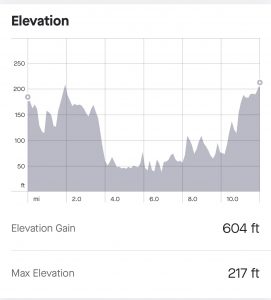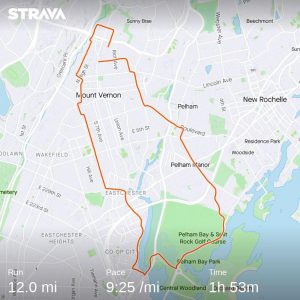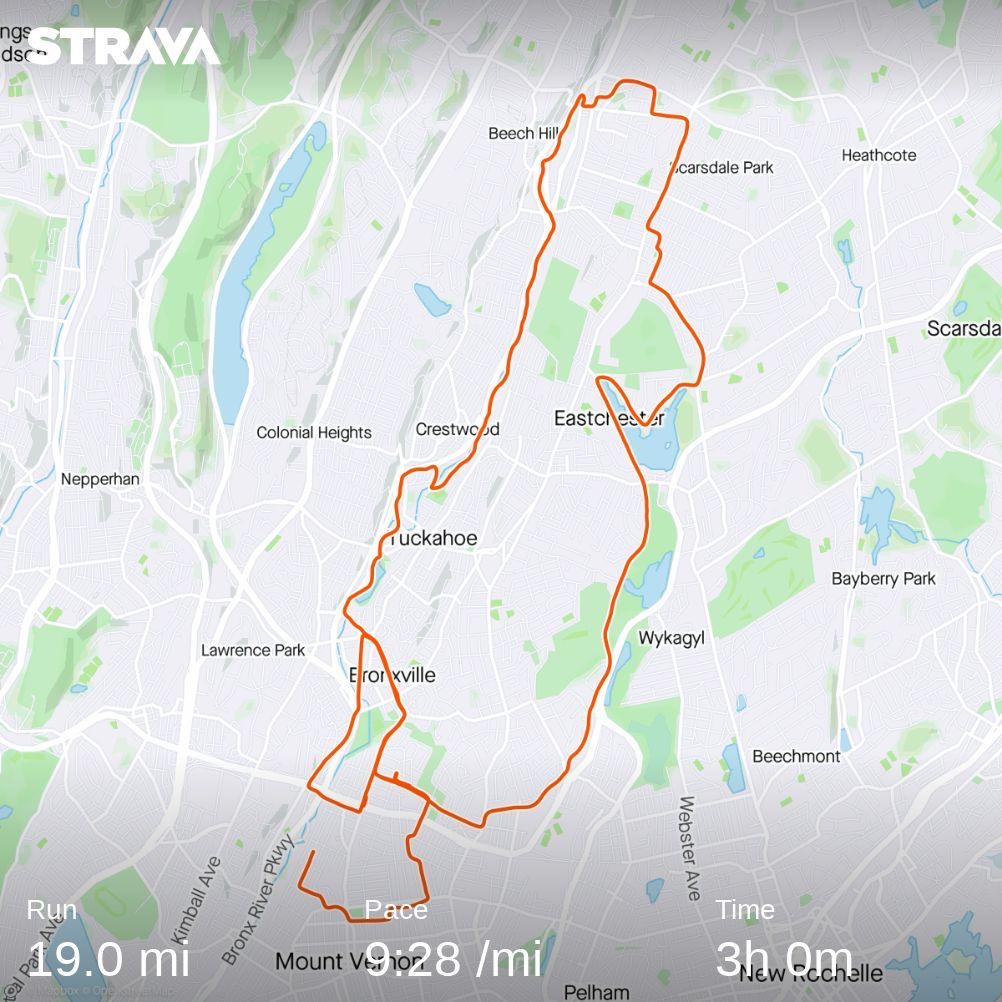Total Miles – 30.8 Miles
Runs 53-56
Well, I though this was the week that tapering started, but as you can see I still ran 30+ miles. I asked my coach and he said this coming week. So, first week of tapering coming up, and final week of training per se. So, in theory I am trained and ready to go! Now, it’s just finishing strong, and making sure the easy, low key runs, have value.
Run 53 was super hard. After having run 19 miles on Saturday, my body was not yet ready to put in 60 minutes of running. Yet, you go out there and do it, even if its super slow and you doubt that you will be able to do Marathon pace in a couple of days, because your body hurts so much right now! Yet, unbeknownst to me, there were strides at the end of this work out at a 7 min pace. The first one took me off guard, I did not check, I just knew I had 60 minutes and the strides came as a shock. Yet, I was able to do it.
Run 54 – marathon pace 4X for 1.25 Miles each. Plus all the accoutrements that come with it turned this into a 7.5 mile mid week beast of a run. I keep being reminded that I am already trained and when it comes time to push. You push! Somehow, I am able to keep that pace and it almost feels natural and easy.
Run 55 – ran without pain! What kind of strange phenomenon is this? How do you run without pain, I have not felt that in forever! A quick 50 minutes and I’m not sure as to why. I felt no pain anywhere. I have been leveraging the Bronx River trail all week and boy did I miss the simplicity of running a familiar route. Where you know when you have to turn around, no maps, no planning. Just run!
Run 56 – What the hell happened! I ran without pain yesterday., yet today! It’s like someone hit me with a hammer in both my ankles. I’m doing a modified route I have never done, Martha and I are running almost the same distance, 11 miles for her and 12 miles or so for me.
I ran a quick warm up mile and picked Martha up right in front of the house. We ran down my block and into the heart of Mount Vernon proper. Let me preface by stating that I did not plan this route very well, when I created it, it did not seem like it was overly hilly. Boy was that a mistake! Right at the start it was massive hills just to get into Mount Vernon proper, then massive hills as you traversed it and came into the Bronx at the end 233rd reaching Baychester. We got to see a whole bunch of car repair places, next to strip clubs, next to McD’s. This part of the Bronx really does not speak to it’s better parts.
Yet, we traversed it with no issues and finally reached COOP City, where we finally got into Pelham Park. The trails here are great and almost always near empty. It’s truly a joy to partake in the up and down of the hills, with a golf course to the left and the sound to the right. I will have to come back and just run this area in the future. Back to the running, by mile 7, while I was still keeping a 9 minute or so pace, I was dying. The hills had my number, my ankles had my number and it was all a desire to finish and be done. We exit Pelham Park trail system in New Rochelle. The fancy parts of New Rochelle with the mansions, only to leave it behind rather quickly as we once again enter Mount Vernon! The last 2/3 miles were ALL UP HILL. I repeat the last 2/3 miles were ALL UP HILL. I was suppose to do 2 hours, but pulled the plug 7 minutes shy at 12 Miles.
This coming week will be better and the end is in site. 2 weeks until the marathon!



